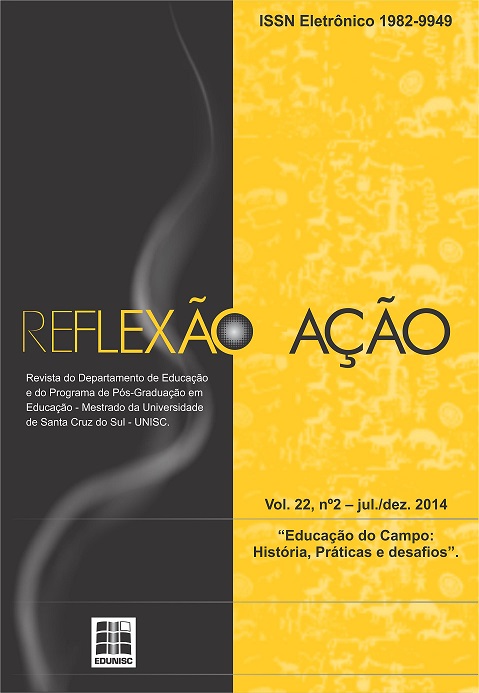FIELD OF EDUCATION EDUCATION OR WORKING CLASS? PERSPECTIVE OF ENTREPRENEURS, STATE AND SOCIAL MOVEMENTS ORGANIZED
DOI:
https://doi.org/10.17058/rea.v22i2.5194Keywords:
Rural Education, Entrepreneurship of Education, Policies for Rural Education, State, Social MovementsAbstract
The paper discusses the rural education from the perspective of entrepreneurs, state and social movements. It shows that the relationship between the guidelines multilateral agencies for educational policies is present in rural education. One way is intervening the agricultural entrepreneurship in schools through volunteering, NGO projects, jobs by offering tax exemption, besides the PRONATEC formed by System S, demonstrating public-private partnerships. Another way is rural education policies, like the PROCAMPO, PRONATEC and school transport, that take place by programs and public notices that are discontinuous, fragmented and pragmatic. The perspective of social movements is of resistance and building a differentiated education by cutting off classes. However, from the contradictions of the capitalist society, they end up agreeing about the need for access to education and training of teachers.Downloads
Downloads
Published
How to Cite
Issue
Section
License
The submission of originals to this journal implies on the transference, by the author(s), of the printed and digital publishing rights. The author´s rights to the published articles are the author´s, the journal has the rights over the first publication. The author(s) can only use the same results in other publications, indicating clearly that this journal was the original publisher. Since we are an open access journal, the free use of articles is permitted for educational and scientific applications, as long as they inform the source according with the CC-BY license from Creative Commons.


